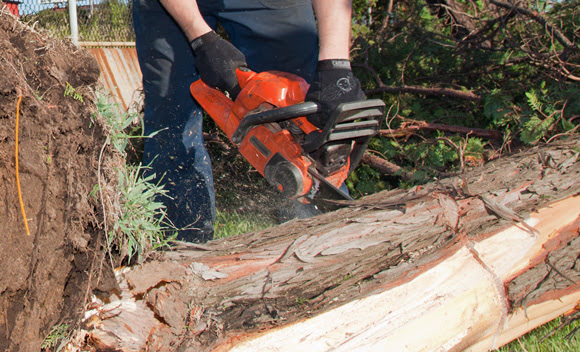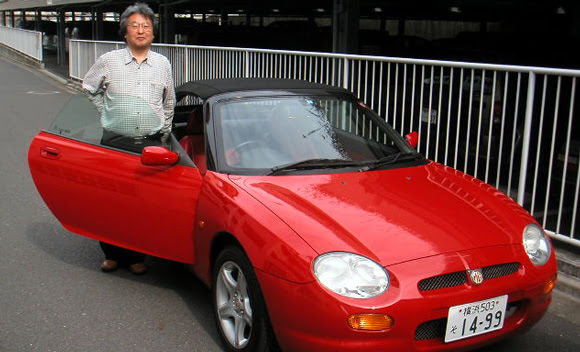Why did you become an expert in human vibration?
I began in noise research, but there were many noise researchers in the 1970s, and not so many researchers into the human response to vibration. And at that time, there were a lot of sufferers from Hand-Arm Vibration Syndrome (HAVS), so I changed the focus of my research after my PhD.
Why were there so many sufferers?
We had a big typhoon in the Hokkaido area in the 1970s, and many trees had fallen down. So there were many people using chainsaws, and afterwards many had HAVS. There were 2500 patients, so the government had to give a large amount of money to each worker. I felt that I could contribute something to prevent workers from getting this syndrome.
“I thought I must do something for the Japanese workers. So I bought many ISO standards to read, using my own money.” Setsuo Maeda
At that time there was less focus on human vibration, and no attention to international standards. Nowadays those 2500 people receiving compensation for HAVS is down to 300, thanks to several government actions.

How do you define human vibration?
It consists of two things: whole-body vibration, which concerns general health effects and comfort, and hand-arm vibration, which can lead to Hand-Arm Vibration Syndrome (HAVS), where the target is to reduce vibration in the fingers.
Do you teach your students about HAVS now?
Yes, especially relating to ISO standards. But it’s a big change – we never used to learn about standards at all.
So how did you learn about ISO Standards?
I learned on my own. In 1992, I was at an ISO meeting in London as an observer from Japan. I saw many people from different countries getting involved, and I was very surprised that teachers and researchers were writing so many of the papers. They were making standards to protect workers from human vibration effects. So I thought I must do something from the Japanese side, for the Japanese workers. So I bought many ISO standards to read, using my own money; I was determined to read them. So I always fought with my wife, saying I need this standard! And now of course the university pays, and nowadays all students must learn about ISO/EU directives. Almost all of my students will go to a company, and Japanese companies must follow EU directives if they want to export to Europe.
Do you work with any companies?
Within the automotive industry, I work with Toyota, Mazda Motor Corporation, and with Delta Industries on making vehicle seats. In the construction industry, there is the Takinaka Corporation, and with Panasonic I’ve been working on bone-conducting headsets. I think all university teachers should have some connections with industry.
Do you work with any other organizations?
I work with universities, for example, Loughborough in the UK, Connecticut University in the USA as well as The National Institute for Occupational Safety and Health (NIOSH) there, and other universities in Canada and the USA. I also work with Malaysia University, and with the ISO Standards organization.
What standards work do you do?
Now we are working on a standard that includes the perception of the human finger, checking the difference between the ISO standard and the Japanese people. It seems Japanese people are more sensitive! Most standards come from colder countries like Norway, Finland, the USA, etc., but we don’t have enough data from tropical countries like Malaysia and Japan.
What is the Japanese community of human vibration experts like?
About 20 years ago I made a group focusing on human response to vibration, and now we have about 300 researchers from universities, government or companies all doing some human response to vibration work. Every year we have a conference. What are the hot topics in human vibration today? Many people have done research into the effect on the whole body, but in the real world you have simultaneous vibration, noise and visual stimuli. We are now trying to find out the combined effect using a six-axis driving simulator at the Hiroshima Campus of Kinki University. The other stimuli reduce the perceived comfort level, as does moving the position of vehicle seats, so automotive manufacturers must think of this.
Setsuo Maeda
What else will be important for human vibration in future?
As well as the multi-sensory research, we are looking at vibration everywhere, such as tall buildings in motion. In the big earthquake two years ago, tall buildings moved up to 4 metres at the very top, making a lot of vibration. Japanese building companies are very good at making buildings that won’t get damaged, but inside the building the people feel very scared and get motion sickness. We don’t have those kinds of design target criteria for these tall buildings, and there are not so many researchers in the world looking into earthquakes, so I feel I must do something about that.
Finally, do you have a name for your Head And Torso Simulator?
I always say HATS-Kun! It means Mr HATS.
Setsuo Maeda Dr. Eng, Dr Med Sco
Location: Kinki University, Osaka, Japan
Position: Professor of Human Vibration, Department of Applied Sociology, Faculty of Applied Sociology
Expert in: Human vibration and international standards
Mission: Preventing Japanese workers from getting Hand-Arm Vibration Syndrome
1978: Assistant Professor, Kinki University, aged 25
1985: Doctorate in Engineering
1999: ISO Standards Committee Secretary
2000: Began work at the Japanese Institute of Occupational Safety and Health, Ministry of Health, Labour and Welfare
2003: ISO Standards Committee Chairman
2003: Doctorate in Medical Science
2010: Returned to Kinki University

Inscreva-se em nossa Newsletter e receba as últimas histórias do nosso mundo de ruído e vibração


